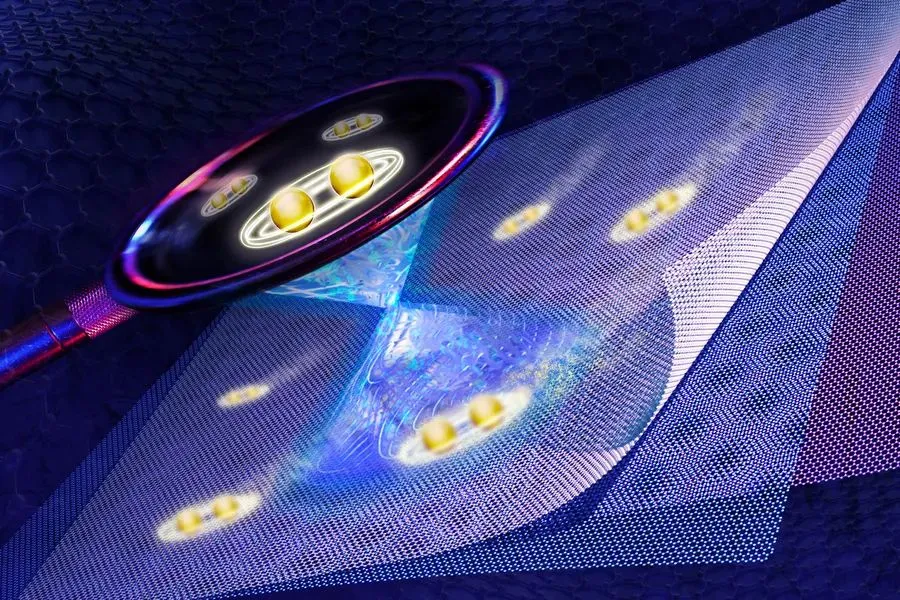Science
MIT Researchers Confirm Unconventional Superconductivity in Graphene

Researchers at the Massachusetts Institute of Technology (MIT) have confirmed the presence of unconventional superconductivity in magic-angle twisted bilayer graphene (MATTG). This groundbreaking discovery marks a significant advancement in the study of superconductors, providing the most direct evidence yet of such phenomena in this two-dimensional material.
Understanding the Superconducting Gap
The team successfully measured MATTG’s superconducting gap, a critical property that indicates the stability of a material’s superconducting state at various temperatures. Their findings reveal that the superconducting gap in MATTG significantly differs from that of traditional superconductors, suggesting that the underlying mechanism for superconductivity in this material is also unconventional.
“There are many different mechanisms that can lead to superconductivity in materials,” stated Shuwen Sun, a graduate student in MIT’s Department of Physics and co-lead author of the study. “The superconducting gap gives us a clue to what kind of mechanism can lead to things like room-temperature superconductors that will eventually benefit human society.”
This research utilized a novel experimental platform that enables real-time observation of the superconducting gap as it develops in two-dimensional materials. The team plans to apply this technology to further investigate MATTG and explore other two-dimensional materials, potentially identifying promising candidates for future technological applications.
Implications for Future Technologies
“Understanding one unconventional superconductor very well may trigger our understanding of the rest,” said Pablo Jarillo-Herrero, the Cecil and Ida Green Professor of Physics at MIT and a member of the Research Laboratory of Electronics. “This understanding may guide the design of superconductors that work at room temperature.”
This latest discovery builds upon the foundational work that Jarillo-Herrero and his colleagues conducted in 2018, when they first produced magic-angle graphene and documented its extraordinary properties. Their initial findings launched a new field termed “twistronics,” focusing on the study of precisely twisted, atomically thin materials.
Since then, Jarillo-Herrero’s team has explored various configurations of magic-angle graphene, including multilayered and twisted structures of other two-dimensional materials. Their ongoing research continues to reveal characteristics of unconventional superconductivity across different setups.
This pivotal breakthrough not only enhances our understanding of superconductivity but also holds the potential to influence the development of future technologies that could revolutionize energy transmission and storage.
-

 Entertainment3 months ago
Entertainment3 months agoAnn Ming Reflects on ITV’s ‘I Fought the Law’ Drama
-

 Entertainment4 months ago
Entertainment4 months agoKate Garraway Sells £2 Million Home Amid Financial Struggles
-

 Health3 months ago
Health3 months agoKatie Price Faces New Health Concerns After Cancer Symptoms Resurface
-

 Entertainment3 months ago
Entertainment3 months agoCoronation Street’s Carl Webster Faces Trouble with New Affairs
-

 Entertainment3 months ago
Entertainment3 months agoWhere is Tinder Swindler Simon Leviev? Latest Updates Revealed
-

 World2 weeks ago
World2 weeks agoBailey Announces Heartbreaking Split from Rebecca After Reunion
-

 Entertainment2 weeks ago
Entertainment2 weeks agoCoronation Street Fans React as Todd Faces Heartbreaking Choice
-

 Entertainment4 months ago
Entertainment4 months agoMarkiplier Addresses AI Controversy During Livestream Response
-

 Science1 month ago
Science1 month agoBrian Cox Addresses Claims of Alien Probe in 3I/ATLAS Discovery
-

 Health4 months ago
Health4 months agoCarol Vorderman Reflects on Health Scare and Family Support
-

 Entertainment4 months ago
Entertainment4 months agoKim Cattrall Posts Cryptic Message After HBO’s Sequel Cancellation
-

 Entertainment3 months ago
Entertainment3 months agoOlivia Attwood Opens Up About Fallout with Former Best Friend



















